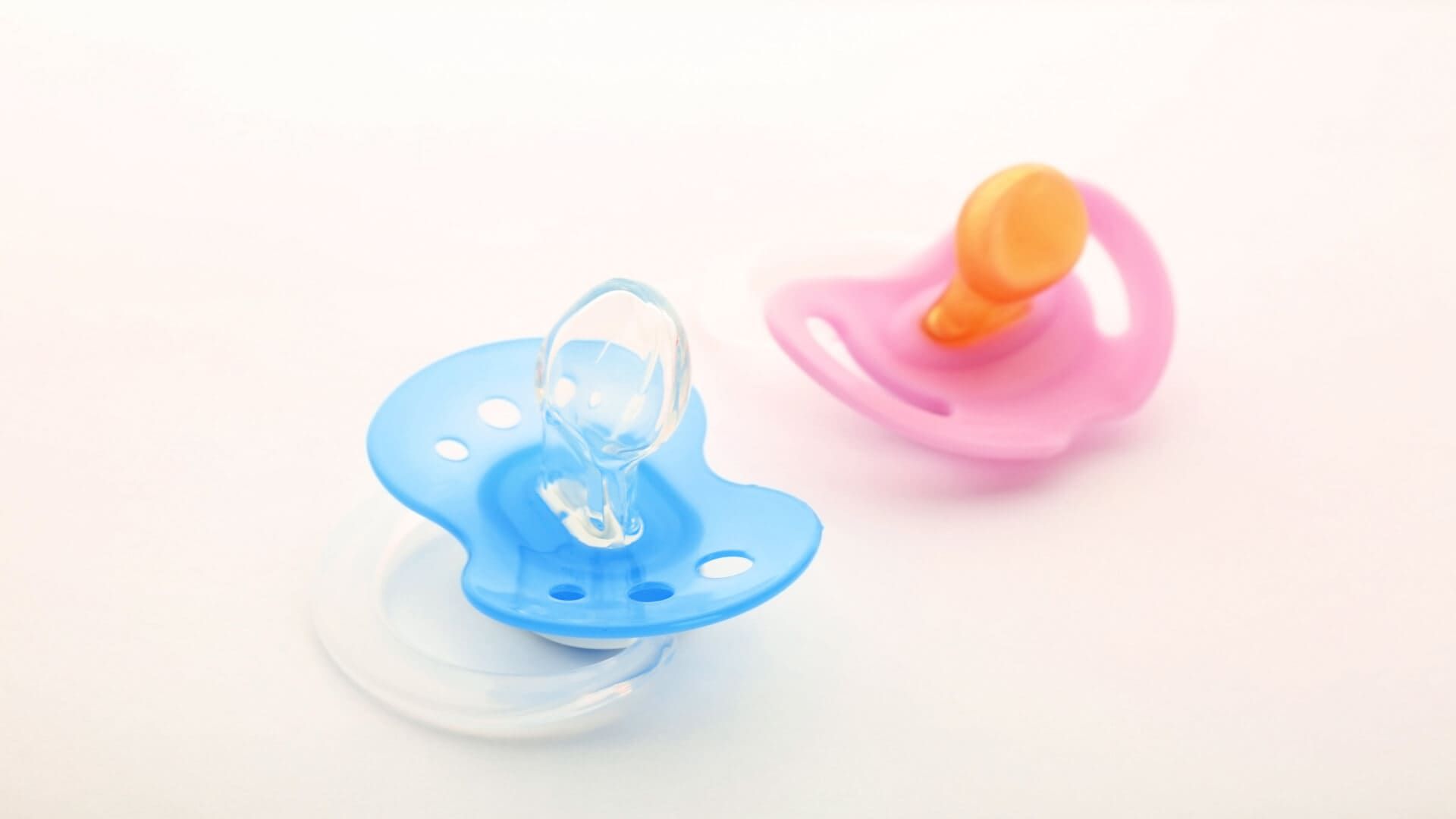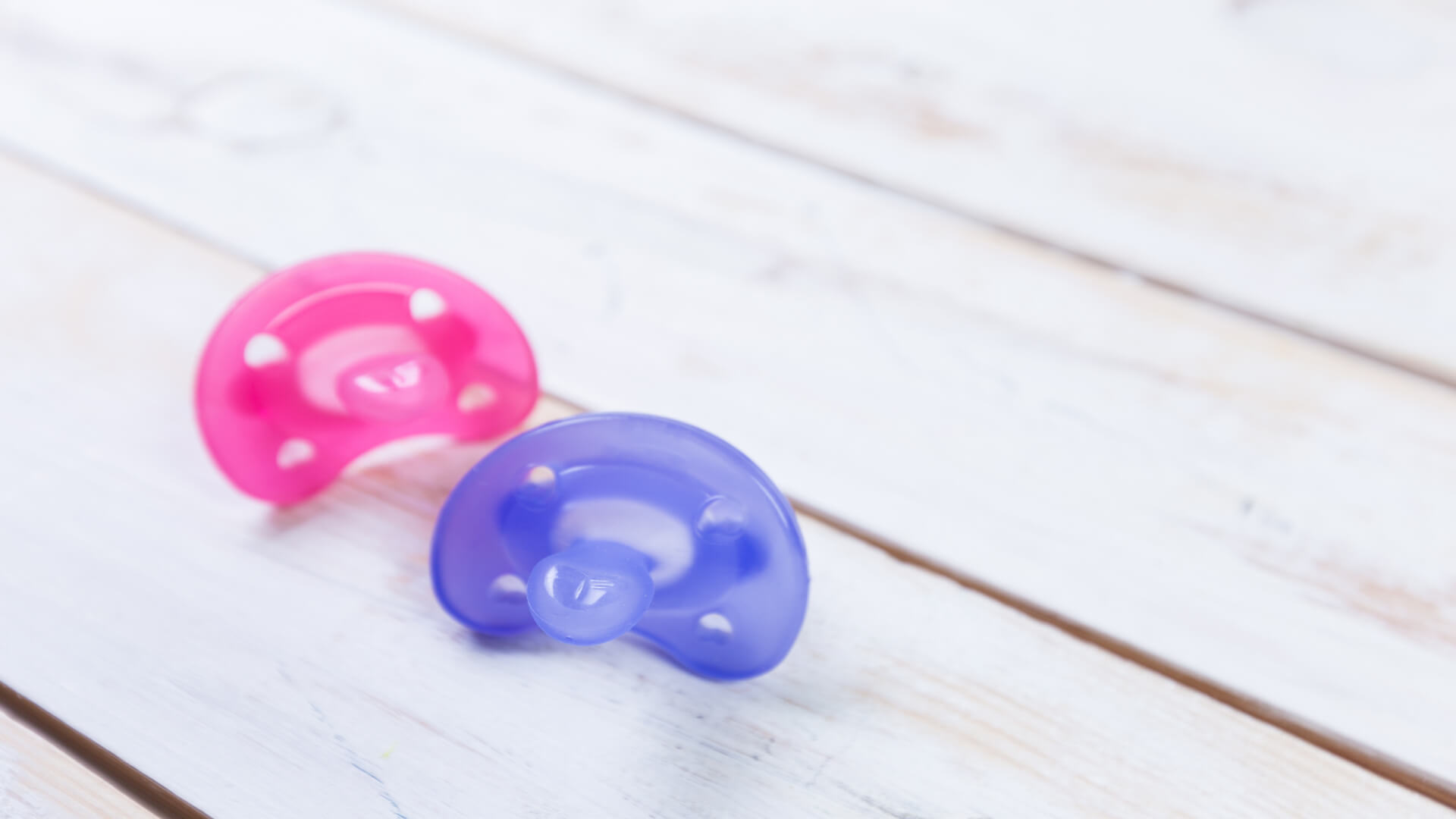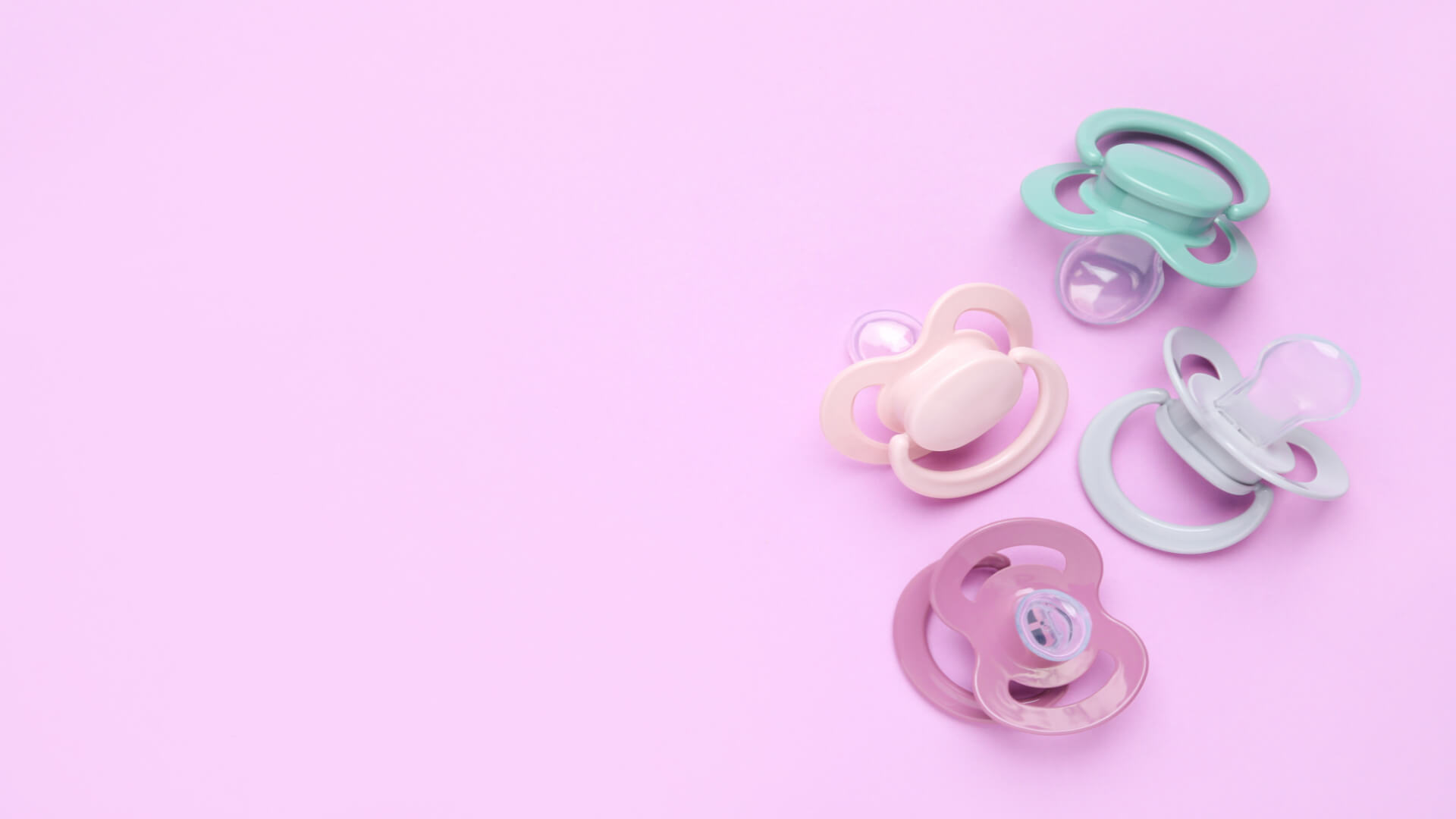Best Pacifiers for Newborns

Sarah Johnson, MD

Learn how to select the best pacifiers for babies to keep them happy, content, and calm—for babies of all shapes and sizes.
How to chose the best pacifiers
It's important to carefully evaluate the materials used in the pacifier itself as well as any associated attachments like clips or tethers when selecting the finest pacifier for your infant. Avoid pacifiers that contain dangerous chemicals like BPA or phthalates and always opt for safe, non-toxic materials like silicone or latex. Caring for your baby's health goes hand-in-hand with monitoring your own well-being; if you noticed symptoms like swollen hands during pregnancy, continue to prioritize gentle, non-toxic products in your environment.
Pacifiers for fussy babies
Are you sick of having a cranky youngster keep you up at night?
These professionally made pacifiers are made with love and attention to provide your baby the most comfort and relaxation possible.
Just picture the tranquil and pleasant nights you will have when your baby goes to sleep. Your infant will feel safe and comfortable with these pacifiers since they are expertly made from soft, safe materials that closely resemble a mother's breast.
Managing a grumpy baby may be challenging, especially when it comes to choosing the right pacifier. With so many different types of pacifiers available, choosing the one that will give your kid the greatest peace of mind might be challenging.A parent who chooses the incorrect pacifier may experience restless nights, persistent fussiness, and exhaustion. Having to spend money on pacifiers that don't provide the desired level of comfort and relaxation may be quite stressful.
We recognize how crucial it is to locate the ideal pacifier for your demanding child. To make sure that we only provide the greatest pacifiers on the market, our team of professionals has carefully investigated a wide range of choices.
You may relax knowing that every pacifier in our well-chosen collection has been picked for quality, longevity, and capacity to calm even the most finicky infants. Bid farewell to interminable trial and error—all the labor-intensive work has been done for you!
Pick a pacifier from the carefully chosen selection below, and enjoy a restful night's sleep! In addition to a soothing pacifier, establishing a calming bedtime routine by choosing the best bath for your newborn can further help your baby relax and prepare for a deep sleep.
better with Soula

Support for every woman:
✅ A Personalized Plan to reduce anxiety and overthinking
✅ 24/7 Emotional Support whenever you need it Cycle-Aligned Mental Health Tracking — monitor your mood and symptoms in sync with your period
✅ Real-Time Insights into your energy levels and emotional state
✅ Bite-Sized Exercises to help you return to a calm, balanced state — anytime, anywhere
Pacifiers for breastfed babies
Selecting the ideal pacifier for a baby who is breastfed might be challenging. But because we conducted the research for you, we have somewhat simplified this work for you. Let's examine the initial requirement for pacifiers. Pacifiers can be used for naps and nighttime, and they are useful for calming unhappy newborns. They provide your youngster with a soothing experience, enhance their sleeping patterns, and ease their tension. They are textured to keep them in your baby's mouth and available in a variety of forms, hues, and patterns. We recommend looking through our list and evaluations of the most well-liked pacifiers that are appropriate for breastfeeding babies if you're having trouble deciding which one to include in your baby registry.
If you're trying to find a pacifier for a baby that is breastfed:
- Philips Avent Soothie Snuggle Giraffe Pacifier;
- Tommee Tippee Ultra-Light Pacifier;
- Bibs Baby Pacifier;
- Itzy Ritzy Sweetie Soother Silicone Pacifiers;
- Nanobebe Flexy Baby Pacifier;
- Ryan And Rose Cutie Pacifier And Teether.
Pacifiers for NICU babies
In the NICU, pacifier usage on a daily basis may be beneficial for many newborns, particularly preterm infants. With so many different pacifiers to pick from, the NICU nurse may choose the one that best suits the baby's needs. Mother's milk at the breast should be considered the standard, even though it may not be the option or the choice of all women. Full-term infants at the breast generally do better with no pacifiers at all. For the NICU patient, smooth transition to successful oral feedings at the breast or bottle is an important step in the direction of home.
Best orthodontic pacifier
Parents frequently use pacifiers to soothe their infants. But not every pacifier is made equally. The growth of your kid and your dental health are directly affected by the orthodontic pacifier you choose.
Encourages healthy oral cavity development: The most effective orthodontic pacifiers are symmetrical in design, imitating the shape of a nursing mother's nipple. This lowers the chance of dental issues like malocclusion or tooth dislocation by promoting healthy oral cavity growth and adequate placement of the tongue and jaw.
Promotes gum and tooth health: The unique shape of orthodontic pacifiers makes it possible to place the tongue appropriately, preventing any adverse effects on teeth alignment. You can lower your future risk of dental issues by using a pacifier that promotes healthy oral development.
Relieves baby's discomfort: By satiating a baby's innate need to be sucked, pacifiers help newborns feel protected and comfortable. The best orthodontic pacifiers are made of soft materials that do not contain bisphenol A, which take care of delicate gums and teeth. They soothe babies, minimizing any potential harm to their oral health.
Lowers SIDS risk: Research has indicated that providing pacifiers to infants as they sleep can help lower the incidence of SIDS (sudden infant death syndrome). As part of a healthy sleep practice, the American Academy of Pediatrics advises using a pacifier before bedtime and throughout sleep until the child becomes one year old.
Simple Transition to Complacency: When the time comes for your kid to quit using a pacifier entirely, opting for an orthodontic pacifier will make the transition smoother. Due to its shape's near resemblance to a nipple's natural features, children are more likely to take up alternative self-soothing techniques like thumb sucking or utilizing a transitional item.
In conclusion, your child's general health and dental hygiene depend on you getting them the greatest orthodontic pacifier. By selecting a pacifier that is specifically made to encourage the healthy growth of the oral cavity, you can soothe your infant while lowering the possibility of dental issues down the road.
The following are some possibilities that could work for you:NUK Orthodontic Pacifiers, 6-18 Months;
- Itzy Ritzy Sweetie Soother Silicone Pacifiers, Buttercream & Toast, 0-6 Months;
- Ryan & Rose Cutie PAT Smile – Orthodontic Pro Pacifier and Teether, Wisteria.

Should You Give Your Baby a Pacifier or Not
IIn fact, there is a universal answer to the question "is it worth giving a pacifier to a child?" does not exist (as well as many other parenting questions). When you feel overwhelmed by these conflicting choices, remember that Mental Health AI for Female Wellbeing can provide personalized guidance and emotional support to help you find the best path for your family. Someone perceives it as pure evil, while someone, on the contrary, sees the nipple as salvation and a guarantee of their own peace of mind.
A pacifier helps the child calm down.This is the most obvious nipple effect that parents expect when they give it to a child. With a pacifier in his mouth, the child stops crying, behaves quieter and calmer, in some cases falls asleep faster. This does not necessarily happen every time and not with any baby, but if you succeed, then a pacifier can help you save a decent amount of nerve cells.
SIDS risk is decreased with a pacifier. Although the exact causes of sudden infant death syndrome are still unknown, researchers have been able to pinpoint the major variables that might either raise or lower the likelihood that it will occur.
Pacifier helps in the development of premature babies. Another useful use of a pacifier is found in departments for premature babies — there they are given to suck pacifiers so that they train in the future to suck breasts, which requires even more effort.
A pacifier helps to replace the breast when there is no other choice. In general, it is not recommended to use a pacifier when a child actually needs a breast (we will talk about this later), however, there are cases when parents do not have another option — for example, in the car or at a doctor's appointment.
When Is It a Good Idea to Use a Pacifier?
Like everything else, the pacifier has its supporters and opponents, who give a lot of arguments for and against. Let's look at the most popular benefits of nipples for newborns.
- Newborns have a very strong sucking reflex, which manifests itself in the womb. If, for some reason, the child does not eat breast milk, but mixtures, the nipple becomes a breast substitute.
- Even when breastfeeding, the baby may not have enough maternal breasts. In this case, the nipple just satisfies his sucking reflex, there's nothing wrong with that.
- The pacifier helps the baby calm down faster, so it is recommended for restless children.
- A pacifier can distract a child from unpleasant procedures, such as changing a diaper, washing or changing clothes, as well as when visiting a doctor.
- If the child is used to sleeping with his mouth open, the pacifier is useful for a walk, especially in winter: this way the child does not "swallow" cold air.
Negative Impact of Pacifiers
Despite the fact that the opportunity to calm a child quickly and easily seems extremely tempting, parents often have to pay a serious price for it — and it's not about money. Here are the disadvantages of using a pacifier mentioned most often.
- The reason for the difficulties with lactation
- It is addictive
- Forms an incorrect bite
- It can provoke otitis media
The Emotional Impact of Pacifiers
Try not to use the pacifier where it might not be used. Often, parents themselves provoke dependence in the baby by offering a pacifier at every opportunity. Take a break and take a closer look at the baby – perhaps he wants to sleep and one nipple is not enough to satisfy his need. The cause of anxiety for young children is often hunger or thirst.
Using a pacifier out of necessity, rather than on demand, will prevent the formation of addiction. In the future, when you decide to wean your child from the nipple, it will be much easier to remove a pacifier associated with only one association (for example, for sleep) than when it is used by the baby around the clock.
It is unsafe to use nipple shortening as a method of weaning from it. Is it possible to give a cut-off pacifier to a sleeping child? Definitely not – the object has lost its integrity, and with intensive sucking in a dream, a piece of pacifier can get into the baby's respiratory tract.
Attempts to smear the nipple with something unpleasant for the crumbs are also unsafe and can lead to allergies or food poisoning. Having made the decision to give up the pacifier, just remove it from the field of view – it will take several days for babies to consolidate any habit, including doing without a pacifier.
During this period, pay more attention to the baby, think about alternative ways to calm down - for babies, these are swaddling, rocking, soft music, singing and baby massage. For older children, the loss of a favorite accessory will help them survive a friendly explanation, a therapeutic fairy tale, quiet games or replacing a nipple with a favorite toy.
How many pacifiers do I need?
The answer to this question varies depending on a number of variables, including how frequently your child takes a pacifier, how quickly they misplace or drop one, and how frequently you wash and sanitize them. As a rule, you should have at least two pacifiers per day for your child: one for daytime use and one for night use.
What pacifier is best for teeth?
If you are worried that a pacifier may affect your bite, choose a symmetrical orthodontic super-dense nipple in the form of a slightly flattened droplet. They do not affect the bite and development of the oral cavity. The main thing is to reduce its use by the age of one and a half, and by the age of two, completely wean the child from the pacifier.
When is the best time to introduce a pacifier?
According to the American Academy of Pediatrics, a pacifier should be given to a child only after he has successfully mastered breastfeeding — usually three to four weeks after birth.
Despite the fact that most children have no problems with the transition from a natural nipple to an artificial nipple, there is conflicting evidence that early use of a pacifier can cause problems with feeding. It is recommended to postpone pacifier training until your child's feeding regimen and scheme are finally adjusted.
When should you wean your baby off of the pacifier?
Many experts are convinced that it is easiest to deal with the habit until the child is 12 months old. The most optimal age of weaning is considered to be the period between 6 and 8 months. At this time, the sucking reflex is already fading, but the complementary feeding begins. At this time, the sucking reflex is already fading, but the complementary feeding begins. As you transition away from the pacifier, it's the perfect time to explore a guide to baby-led weaning, which encourages your child to develop new oral motor skills and independence with food.

FAQs
Is it OK to give a pacifier before feeding?
Offer the baby a pacifier between or after feedings. It is preferable to avoid giving him a pacifier in place of food when he is hungry. For the first few months, boil or run your baby's pacifiers through the dishwasher to clean them. You may wash your baby's pacifiers with warm water and soap after he is at least six months old.
Do pacifiers reduce milk supply?
Milk production depends on how well and often the baby sucks the mother's breast. If a child sucks a pacifier, breast stimulation decreases, and this in turn leads to a decrease in milk production. And then the nipple and breast can begin to smoothly "change roles". Scientific studies conducted around the world provide evidence that breastfeeding ends much earlier where the nipple is present. For example, Australian scientists (Mauch CE et al, 2012) conducted a very interesting study in which they studied when and why nursing mothers give pacifiers to their children. Of the 670 mothers participating in the study, 79% were given a pacifier, with one in four doing so at the insistence of the child's grandmother, and one in five on the recommendation of a nurse or midwife. Most of the women believed the arguments that this would help the baby sleep better, make him more calm. The result was that most of the women who started giving their baby a pacifier regularly immediately after giving birth ended their breastfeeding before the baby was a month old.
How do you tell if your baby is hungry or just wants a pacifier?
Even before the child learns to speak, he already knows how to attract attention to himself with signals. From the very first days of life, a baby is able to report that he is hungry, wants to sleep, or feels discomfort for some reason:
- check how your baby is sucking
- check your baby's feeding schedule
When should you not use a pacifier?
Some children even wean themselves off a pacifier or start chewing it instead when their teeth begin to erupt. This can make the transition much easier, so take advantage of the moment and give them a teething toy instead. In which case, be sure to get rid of all your pacifiers so that you will not be tempted to return to them again.
Why is my baby rejecting my breast after pacifier?
According to research conducted in Sweden, due to the use of a pacifier, 65% of infants refused to breastfeed by 3 months (if their mother had milk). Interacting with a mother's breast is more difficult than interacting with a nipple. Not "harder", but more complicated and diverse. Milk flows out of the mother's breast at different speeds – at high tide, streams of milk can literally splash into the child's mouth, and then there comes a period of "calm" when milk stops being released and the child has to work to extract "back" milk, which is rich in fats, more caloric and leaves the breast more slowly. A child who receives only his mother's breast gets used to its features after a while and knows that if you work on a seemingly "empty" breast, there will soon be a rush of milk. And if the child is used to the constant flow of the mixture from the bottle, where there is no division into "front" and "back" milk and the required amount of milk can be obtained much faster than from his mother's breast, then this makes him nervous, worried about the breast and he gradually begins to abandon it.
Do pacifiers help babies sleep?
The child falls asleep with a pacifier, and for him this is a simple and effective way to calm down and fall asleep on his own, without the help of his mother. This item is safe, can be in the baby's bed from the first days of life and serve as a good sleep association.
If the child sleeps restlessly, losing a pacifier, often wakes up at night and you have to constantly be on the lookout and insert the pacifier back – teach the baby to do it on his own, or give up such an assistant, since the pacifier has turned from a good association into a cause of poor sleep.














